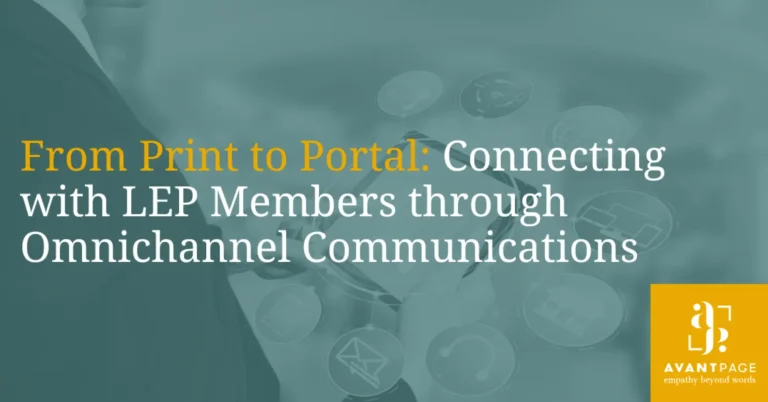Types of Sign Language Used in the United States
When it comes to sign languages, the most common one you’ll come across in the United States is American Sign Language (ASL), but it’s far from the only one. Depending on the audience you serve, you may need an interpreter for the different types of sign language used in a specific area.
In this article, we’ll review some of the most commonly used sign languages in the U.S.. This information will give you a better understanding of the diversity of sign languages and help you make informed choices about the sign language interpreting services you may need.
The Evolution of American Sign Language
While various sign languages have existed for centuries, standardization came much later, especially in comparison to their spoken counterparts. As deaf and hard-of-hearing students began to engage in formal education here in the United States in the early 19th century, they adopted a modified variant of French Sign Language (though lip-reading served as the predominant mode of instruction until the 1960s, when deaf and hard-of-hearing individuals successfully advocated against this practice).
Over time, this modified dialect of French Sign Language (LSF, or Langue des Signes Française) would eventually evolve into the modern ASL used commonly in English-speaking America. Today, the two languages are not mutually intelligible. In fact, there are more than 300 different signed languages, with as much variation as you would find among the world’s spoken languages.
Given the fact that it was standardized fairly recently, there’s still a lot of regional variance across dialects of ASL, and many individuals who become deaf or hard-of-hearing late in life may not use it with native-level fluency, despite it being their primary mode of communication.
As a result, it’s particularly important to be knowledgeable about the different kinds of sign languages used commonly among deaf and hard-of-hearing individuals in your locale.
Different Types of Sign Language Commonly Used in the U.S.
The United States is made up of a diverse population, and as such, uses a variety of sign language types based on region or disability. Here are some of the more common types of sign language used in the U.S..
American Sign Language
This is the primary language of deaf and hard-of-hearing sign language users in the United States and English-speaking Canada. Derived from French Sign Language, ASL is estimated to draw a little more than half of its signs from Old French Sign Language.
A common misconception among English speakers who aren’t familiar with the intricacies of sign language is that ASL speakers simply spell out English words and sentences in sign form; however, this is far from the case. ASL’s grammar is significantly different from English, so it’s important to make sure you’re working with an interpreter with a deep knowledge of ASL.
Regional Varieties of ASL
Since ASL was standardized fairly recently, there are several regional dialects of the language used among deaf and hard-of-hearing communities throughout the United States. Just as somebody from New York City might speak English a bit differently from somebody born and raised in Milwaukee, there are differences in the ASL used by individuals from different parts of the country.
Some regional differences may include variations in vocabulary, signing speed, or the influence of local spoken languages. These regionalisms can impact comprehension, especially when an interpreter and client are from different parts of the country.
Likewise, dialects like Black American Sign Language utilize different slang, phrases, and accents that interpreters need to keep in mind when interpreting.
Signed Exact English
While ASL and its regional varieties are all derived from French Sign Language, Signed Exact English is a one-for-one manner of rendering English into a signable format. Signed Exact English utilizes English words and grammar exactly, with signs as the primary medium.
In Signed Exact English, speakers utilize ASL signs for words and fingerspelling, placing them in the same phrase order and sentence structure as English.
This form of the language is not particularly common nowadays, thanks to the widespread acceptance of ASL in deaf education in the latter half of the 20th century. However, some individuals do indeed utilize it, so it’s important to be aware of its existence; some people who become deaf or hard-of-hearing later in life may prefer to use Signed Exact English instead of ASL, since they’re already accustomed to the grammar and spelling of English.
SEE is sometimes used in educational settings where the goal is to reinforce written and spoken English comprehension alongside signed communication.
Pidgin Signed English
Pidgin Signed English is a blend of ASL and English, used by individuals who may be transitioning from spoken English to ASL or by those who interact frequently with both hearing and deaf communities. Unlike ASL, which has its own distinct grammar and syntax, Pidgin Signed English incorporates elements of English grammar and word order, making it a more accessible form of communication for those familiar with English, such as those who lose their hearing later in life.
PSE typically involves the use of ASL signs in English word order, and may also include more fingerspelling and mouthing of English words than traditional ASL. This mode of communication is particularly common among individuals who become deaf later in life and are more accustomed to English, as well as among hearing individuals who are learning ASL.
PSE is not formally taught in most educational institutions but often develops organically in mixed communities of deaf and hearing individuals.
Tactile Signing
Tactile signing is a communication method primarily used by individuals who are deafblind, and rely on touch to convey sign language. Deafblind individuals and interpreters must physically touch so that they can communicate, as the deafblind individual will be unable to see the interpreter’s signs. This approach includes several methods, such as hand-over-hand signing, where the receiver’s hands lightly touch the signer’s hands to read the signs through movement and touch.
This method used often depends on the individual’s preferences and level of residual vision or hearing.
Home Signs
Home sign systems are gestural communication methods often spontaneously created by deaf children who aren’t exposed to adequate amounts of ASL, or other standardized sign language. When deaf children are isolated from other deaf individuals, they may develop their own signs for certain concepts for which they don’t have the standardized lexicon to express adequately.
Adult speakers may continue to use these signs to some extent as they grow up and are exposed to formal sign languages, or they may eventually drift away, so it’s important for interpreters to be aware of them.
Home signs serve as crucial tools for communication in the absence of formal sign language education. In some cases, they may form the foundation for a child’s later learning of ASL or another sign language.
Working with an ASL Interpreter
When you’re requesting interpreting services from a language service provider, you may need to work with a sign language interpreter who is familiar with a sign language variant other than ASL, such as Signed Exact English (SEE) or a particular regional dialect of ASL.
Because of the robust variety of sign languages used throughout the US, it’s common for sign language interpreters to engage in an informal conversation with the deaf or hard-of-hearing individual prior to beginning the formal interpretation. This allows them to gauge the individual’s unique speech style and ensure that they’re a good match for the individual as an interpreter.
Frequently Asked Questions About the Different Types of Sign Language
Is there a universal sign language?
No, there is no universal sign language. Just as spoken languages differ by country and culture, so do signed languages. Each sign language develops organically within deaf communities, influenced by local customs, history, and education systems. However, an auxiliary system called International Sign is sometimes used in international settings, such as at global conferences or during international travel. While helpful in some contexts, International Sign is not a fully developed language but it serves as a tool for communication between users of different sign languages.
Why is it important for organizations to work with sign language interpreters?
Working with sign language interpreters ensures that deaf and hard-of-hearing people have equal access to communication, services, and opportunities. Interpreters help bridge the gap between spoken words and sign language, making it possible for everyone to participate fully, whether in government settings, schools, workplaces, or public events. Providing qualified interpreting services is not only a matter of compliance with accessibility laws, such as the Americans with Disabilities Act (ADA), but also a key step toward creating inclusive, respectful environments that recognize the value of Deaf culture and effective communication through hand gestures, facial expressions, and body language.
What are the most common sign languages around the world?
There are over 300 documented sign languages worldwide, each with its own grammar, hand gestures, facial expressions, and body movements.
Some of the most commonly used sign languages include:
– American Sign Language (ASL): widely used in the U.S. and parts of Canada.
– British Sign Language (BSL): the primary sign language in the United Kingdom.
– Chinese Sign Language (CSL): used throughout China, with regional variations.
– Spanish Sign Language (LSE, from the Spanish name Lengua de Signos Española): used in Spain and differs from Latin American sign languages.
– Japanese Sign Language (JSL): recognized as a natural language in Japan.
– New Zealand Sign Language (NZSL): one of New Zealand’s official languages.
Each belongs to its own sign language family, similar to how spoken languages can be grouped into families like Romance or Germanic languages.
Do all deaf people use the same sign language?
No, deaf people across different countries—and even regions within the same country—often use their own sign language. For example, ASL and BSL are not mutually intelligible, despite both being used in English-speaking countries. Additionally, factors such as educational background, access to a school for the deaf, and exposure to deaf culture can influence which sign language or variation a person uses. Some hard-of-hearing people may rely more on spoken words, lip reading, or manual alphabets, while others prefer full immersion in their native sign language.
How do facial expressions and body language affect sign language communication?
In sign languages, facial expressions, body movements, and handshapes are essential parts of communication. They are not just emotional cues—they serve grammatical and syntactic purposes. For example, raising your eyebrows can turn a sentence into a question in ASL, and the tilt of your body can indicate the subject of a sentence. These non-manual markers are critical to conveying tone, intent, and grammatical structure in a way that spoken words alone cannot replicate.
Summary: Types of Sign Language and Their Role in Accessibility
There are several different types of sign language used throughout the United States. While the primary sign language used in the country is ASL, there are several varieties of sign languages to keep in mind as you’re seeking out sign language interpreting.
Understanding which type of sign language someone uses can help you enhance communication and avoid misunderstandings during critical conversations. If you’re looking to make your services more accessible, reach out to us for sign language interpreting services and language accessibility services.
Avantpage has a network of specialized sign language interpreters who can help you connect with deaf and hard-of-hearing clients or constituents — contact us today at [email protected] or (530) 750-2040 to learn more about how we can connect you to a sign language interpreter in as little as four seconds.


